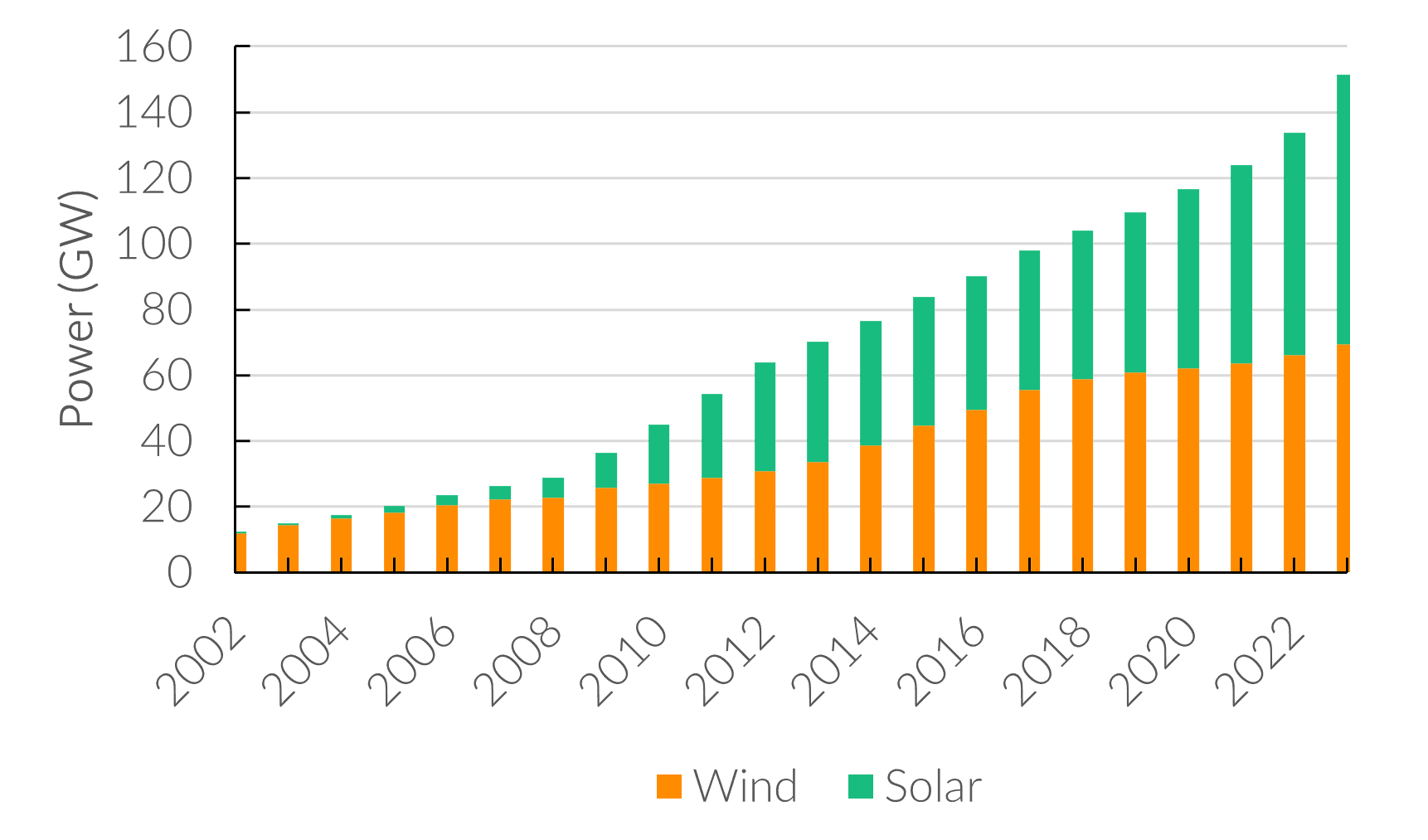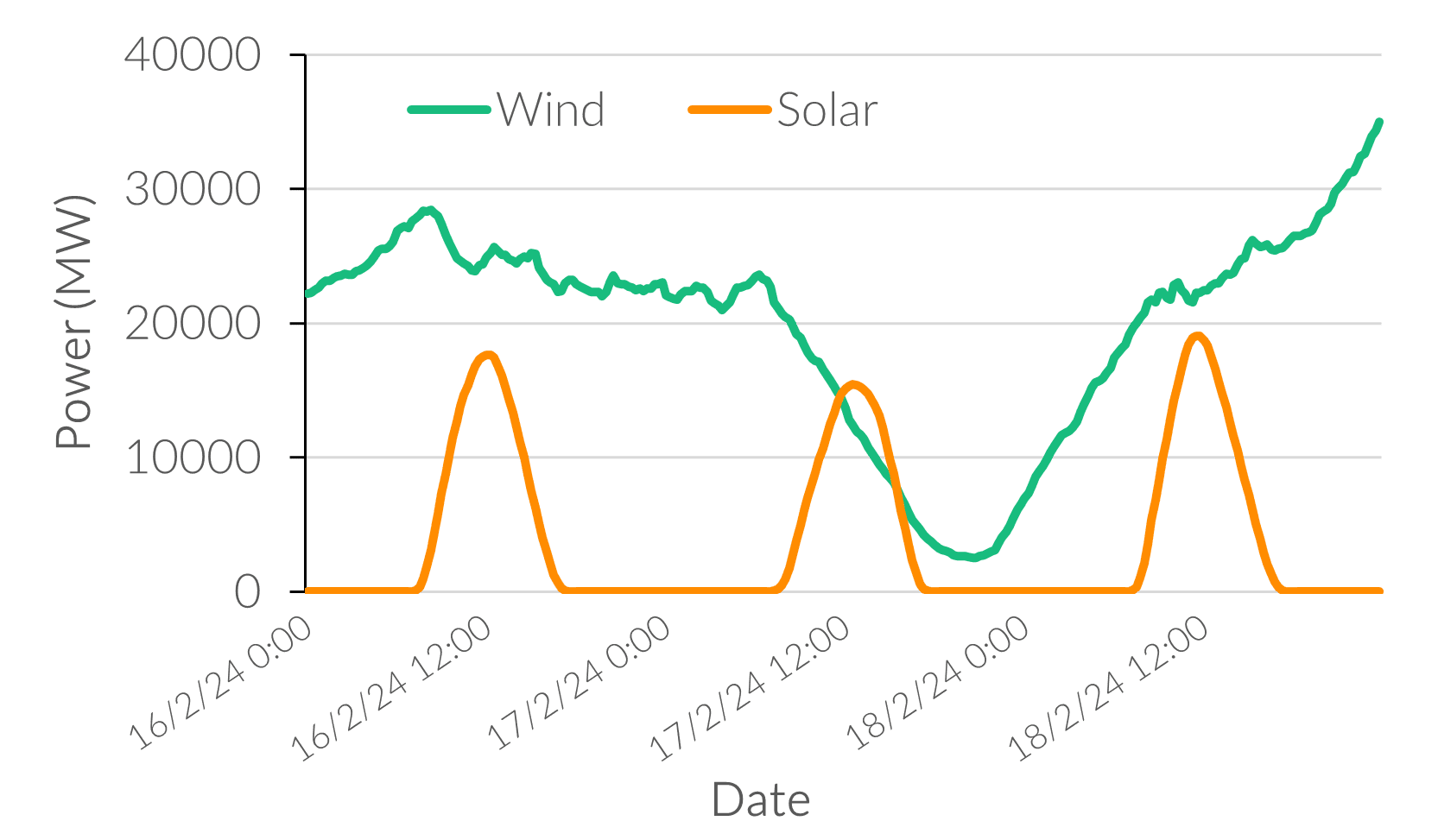20.03.2024 / 09:15
Short-term Weather Forecasts and Energy
Energy Markets

Short-term weather forecasts
Numerical weather prediction (NWP) models use mathematical models to describe the dynamic and physical processes in the atmosphere. By combining the latest observations and previous forecasts, weather models can be run forward in time to create a forecast for the next 10 days forecasts are most accurate for the next 1 -3 days. Global Circulation Models (GCM) have a coarse spatial resolution and describe the general circulation of large weather systems like mid-latitude cyclones. To forecast localised weather conditions such as individual storms, Regional Circulation Models (RCM) are nested inside GCM. The RCM have a higher spatial resolution and are capable of describing the weather conditions in more detail by taking into account the effect factors like terrain and water bodies.
Important considerations associated with NWP are the scale of predictability and initial conditions. Large-scale and long-lived weather patterns such as frontal systems are easier to predict and can be forecasted with lower-resolution models. On the other hand, small-scale and short-lived events like thunderstorms are harder to predict and require high-resolution models. Furthermore, even small changes in the initial conditions can potentially have large impacts on the final forecast.
NWP models require the real-time import of observations from the global observation network, large storage for input and output data as well as vast computational power which increase with model resolution. These requirements limit their application in many sectors which require frequent high-resolution data. However, the recent developments in machine learning (ML) models in weather forecasting applications are an exciting development. The ML models are trained using historical data and generate forecasts that are more accurate than conventional NWP models. Furthermore, ML models require significantly less computational power and time. As a result, ML models can be combined with Radar data to generate high-resolution forecasts (<1 km, 5 minutes) for the next 2 hours. However, ML models also demand large amounts of input data and therefore a proper data management system must be utilized.
Energy sector
The supply of energy from renewable sources is variable (Figure 1) and leads to uncertainties in the energy market and further affects network operations like redispatch and congestion management. Given the continued growth of renewable energy in Germany (Figure 2), it is important that the energy market can depend on reliable weather forecasts.


Weather forecasts, enable energy traders to determine volumes and trading strategies, especially in the short-term market. Accurate weather forecasts allow traders to market their generation capacity earlier and lower their risk. For both the day-ahead and intra-day markets weather forecasts play a crucial role. However, participation in the intra-day market with short delivery windows requires the most accurate and frequently run forecasts with shorter time intervals (≈15 min.). For the renewable sector, weather forecasts of radiation, cloud cover and wind speed are important for 24 hours to 15 minutes before delivery. However, inaccurate forecasts, increase the need for redispatch, increase continuous intra-day trading and can have substantial financial implications for traders.
Typical weather forecasts are deterministic and provide a single possible outcome with describing the range of possible weather conditions. However, participants in the energy sector need information about the uncertainty associated with a forecast. To do this, participants in the energy sector make use of ensemble (probabilistic) forecasts. Ensemble forecasts can be generated by altering the initial conditions to represent the uncertainty associated with initial conditions. Repeating this procedure several times creates an ensemble forecast which describes the range of possible weather conditions as well as the average weather predicted. Energy producers can use ensemble forecasts to ensure that their predictions of power generation are within the expected range of weather conditions.
Conclusion
Forecast accuracy, large data volumes and real-time integration of forecasts are some of the challenges faced by participants in the energy sector. It is therefore important that forecasts are continuously developed by using new methods and tailoring forecasts for the energy sector.
